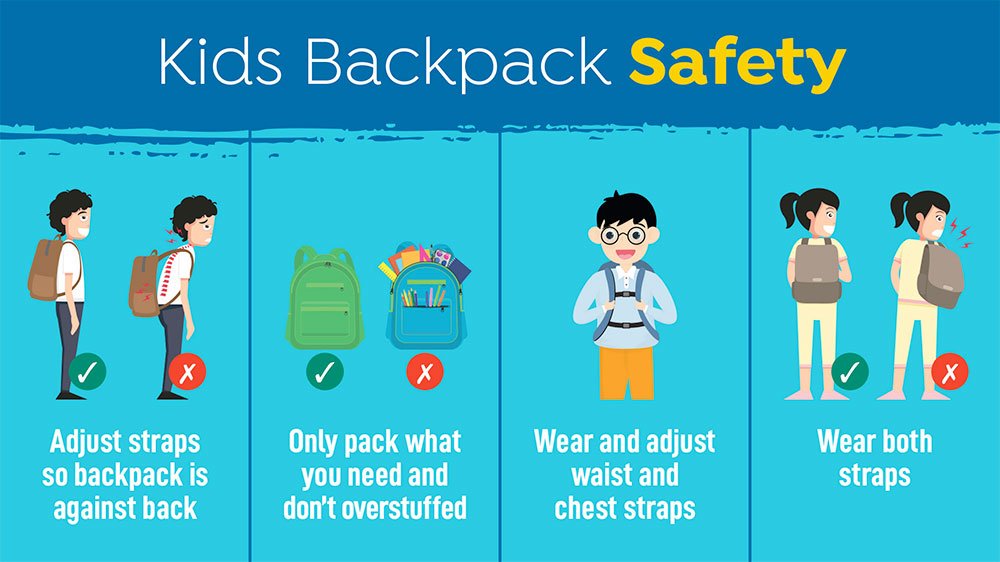Backpack Safety for Students to Help Lighten the Load
 Your Child's Back Depends on It!
Your Child's Back Depends on It!
Picking out a new backpack for the upcoming school year can be a fun tradition for many students. You get to decide what color, fun characters and designs will be carried around with you all year. Your child's backpack can serve as an icebreaker or a way to connect in conversation with other students.
While the backpack's design can be an important component when making your selection, there are a few other criteria students should keep in mind to help prevent strain and injury to the spine.
According to the American Academy of Pediatrics (AAP) and the National Safety Council (NSC), here's what students should be looking for in a backpack:
- The bottom of the backpack should be at waist level — no more than 4 inches below.
- Keep it light! The backpack shouldn't weigh more than 5-10 percent of the child's weight.
- Examples: 42-pound child, 10% is 4 pounds; 59-pound child, 10% is almost 6 pounds; 81-pound child, 10% is 8 pounds.
- Find a backpack with waist and chest straps, and padded straps for extra shoulder protection and to support the weight.
- Avoid single-strap backpacks. They might seem trendy, but they can cause harm to your spine. Two straps will help disperse the weight.

Depending on the weight of the books and materials your child will be carrying in their backpack, you may want to consider alternative options like a backpack on wheels. This is especially helpful to students who don't have the option to lighten the load between classes.
When you're packing your backpack in the morning, utilize the various pockets and components. They're not just there for looks. Often the pockets help disperse weight more evenly. NSC recommends placing your heaviest books and supplies at the bottom center of the backpack.
It might be tempting to bring all your books and supplies home with you each night but consider only packing the materials you absolutely need.
If your child is experiencing back, neck or shoulder pain, make an appointment to speak with their primary care physician.